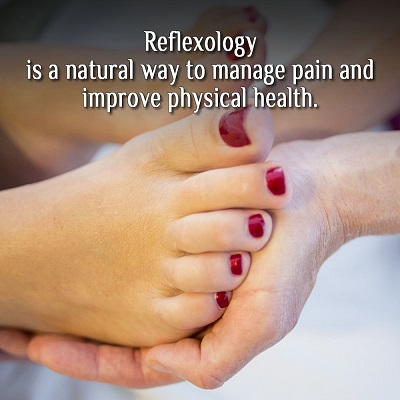 Modern science has played a big role in keeping us healthy, but in addition to new discoveries in science and health, ancient healing techniques can be used as a natural alternative to some traditional treatments and medication.
Modern science has played a big role in keeping us healthy, but in addition to new discoveries in science and health, ancient healing techniques can be used as a natural alternative to some traditional treatments and medication.
One of the oldest techniques used in healing physical pain and ailments is reflexology. Reflexology aims to restore balance in the energy flow and bring relief to different parts of the body. The pressure points are all connected to the body’s organs and systems.
Reflexology can help alleviate different types of pain we often feel due to stress, work, the natural aging process, or our hormones. The pressure applied to the pressure points can send signals through the central nervous system to adjust tension levels, resulting in a more relaxed and calmer state.
More and more people are looking into reflexology as a more natural way to manage pain. A recent study suggests that reflexology can be as effective as taking painkillers, making it a possible alternative to prescription medication.
Aside from improved general health, reflexology can also provide pain relief to specific areas of concern. Here are just some of the common ailments reflexology can help treat:
Sluggish Circulatory System
A compromised circulatory system is the cause of many physical problems. Reflexology can help increase the blood flow throughout the body, keeping the cardiovascular system healthy. The increase in oxygen can help maintain a healthier body.
Migraines and Headaches
One in four households in the United States has at least one member suffering from migraines and headaches. Most of these cases are related to high stress levels due to work or school. Reflexology can offer patients relief from migraines and headaches through the massage’s relaxing effect on the body.
Applying pressure between the base of the thumb and index finger can relieve pain caused by a tension headache. Another pressure point that can be connected to migraines and headaches is the one located in between the big toe and the second toe. Applying pressure on this area can lessen the pain felt in the temporal lobes.
Digestive System
Problems with the digestive system such as Irritable Bowel Syndrome, hyperacidity, and indigestion can be treated with reflexology. The increase in blood flow decreases stress in digestion and encourages a faster healing process.
It can also reduce nausea, vomiting, ulcer, bloating, enteritis, and abdominal pain. The relevant pressure points can be found throughout the hands, feet, and torso.
Back Pain
Pain in the back area can also be addressed through reflexology. Pressure points on the soles of the feet and around the heels and ankles are all connected to the spine. The soles of the feet, as well as the top part of the feet, are connected to the shoulders and back.
Applying pressure on these points can relieve lower and upper back pain. Flexing the foot forward and backward can help relieve pain in the lumbar area. Reflexology can also alleviate pain caused by sciatica.
Sinusitis
Relief from sinusitis can also be achieved through reflexology. The pressure points connected to the sinus area are mostly located on the head, face, and some parts of the neck. These pressure points include the base of the nose, bridge of the nose, and inner side of the eyelid, between eyebrows, over the cheekbones, and the backside of the head and neck.
Applying pressure on these areas can treat cold and flu symptoms, runny nose, and facial pain due to sinusitis. There are also pressure points located on the soles of the feet that can help relieve these symptoms.
Arthritis
Arthritis is generally identified among people who are advanced in age, but the truth is, anyone at any age can be affected by some form of arthritis. There are several types of arthritis, but the two most common types are osteoarthritis and rheumatoid arthritis. Joint pain, stiffness, and swelling are just some of the symptoms of arthritis.
Reflexology can treat these symptoms by applying pressure to the different pressure points on the hands and feet. Aside from alleviating pain, reflexology can also increase the range of motion of the joints to improve mobility. A word of caution though, reflexology is not applicable to those who are suffering from gout as pressure may aggravate the pain.





